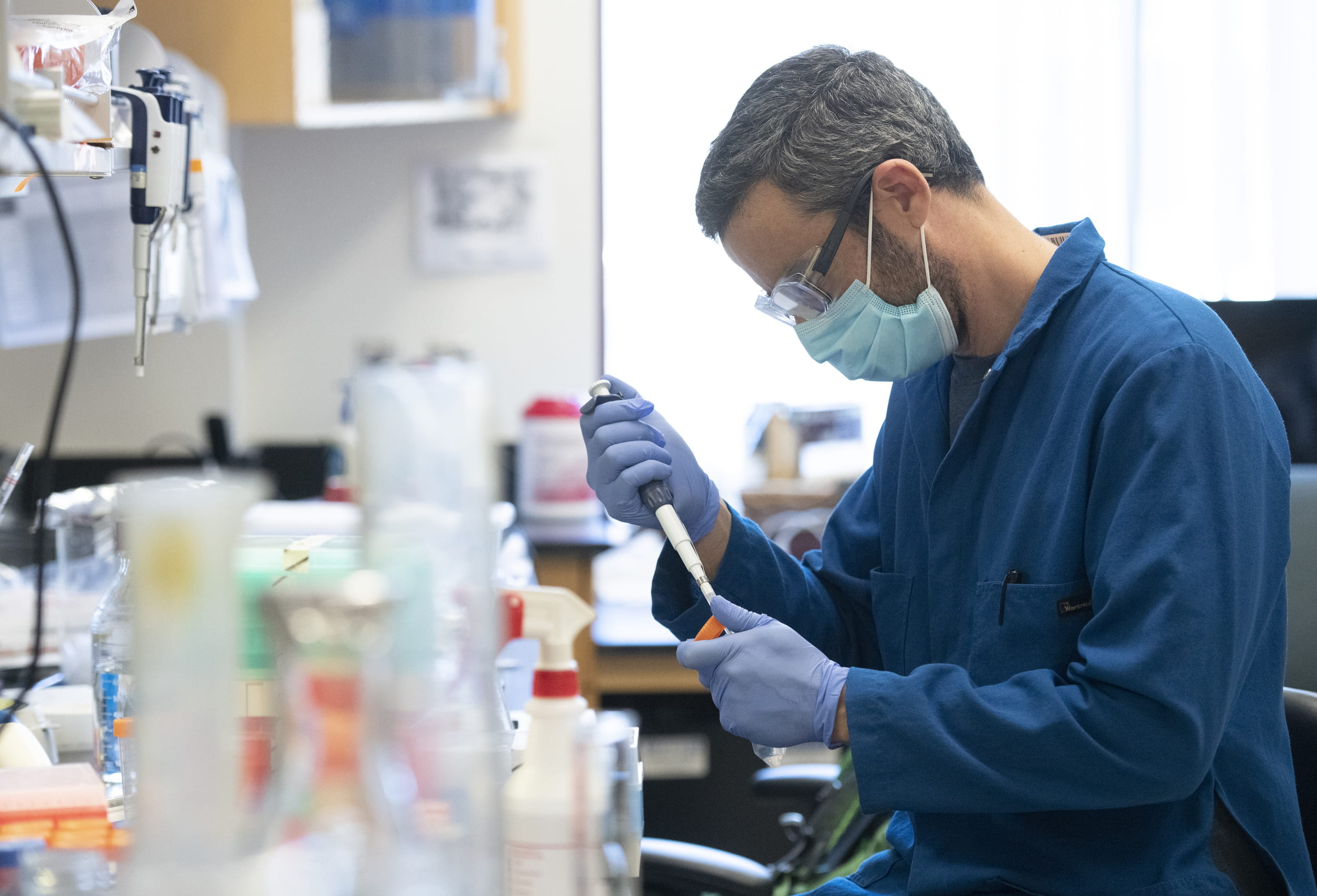UCI researchers develop rapid antibody generation technology
Method can be used to target SARS-CoV-2 virus

Irvine, Calif., Dec. 7, 2020 — Using the same strain of yeast that ferments wine and makes dough rise, a team led by University of California, Irvine and Harvard Medical School researchers has developed an in vitro technology that can rapidly hypermutate antibodies. The new technology generates antibodies faster than animal immune systems and better than current synthetic methods, giving researchers the tools for evolving exceptionally potent agents, including therapeutic candidates that target SARS-CoV-2.
In the research, posted as a preprint on BioRxiv.org, the UCI/HMS team created the synthetic antibody generation system called autonomous hypermutation yeast surface display, nicknamed AHEAD. They demonstrated the power of their system in a number of experiments.
“Our most salient demonstration of AHEAD was using it to obtain potent neutralizing nanobodies against SARS-CoV-2 in just one-and-a-half to three weeks of uninterrupted time,” said co-principal investigator Chang Liu, associate professor of biomedical engineering in UCI’s Samueli School of Engineering.
High-quality antibodies are considered magic bullets in biology, because they specifically bind to and promote the elimination of foreign substances called antigens. As a result, antibodies are critical agents in research and diagnostics, are they the basis for myriad new therapies – including those for COVID-19 – and constitute a rapidly growing class of drugs that had $100 billion in sales in 2017.
However, generating a custom antibody capable of binding to a desired target antigen is not easy. Currently, the predominant approach for antibody generation remains animal immunization, which is usually a slow and costly process that suffers from challenges in animal welfare.
Although synthetic animal-free systems for generating antibodies against custom antigens have been developed, animal immune systems are still preferred because they apply an exceptionally powerful evolutionary process called somatic hypermutation that progressively improves antibodies in their ability to bind to antigens, arriving at highly effective antibodies over time.
Currently, synthetic systems have difficulty mimicking this somatic hypermutation process. AHEAD upgrades synthetic antibody generation by repeating hypermutation inside yeast, using a continuous evolution system called OrthoRep, which Liu’s lab pioneered over the last few years.
“The advantage of AHEAD is that weak antibodies against an antigen of interest will automatically get better and better as we go through what we call AHEAD cycles, each of which just requires growing and sorting yeast cells and so is very fast and efficient,” Liu said.
The researchers applied AHEAD to generate nanobodies against several targets including SARS-CoV-2’s S protein, which facilitates viral entry into cells. The resulting nanobodies attained high affinities through multiple mutations over three to eight AHEAD cycles that saw huge improvements in their ability to bind to SARS-CoV-2. When tested for their ability to inhibit infection in a cellular assay, the nanobodies were highly potent.
The researchers believe AHEAD will be an essential weapon in the continued struggle against SARS-CoV-2 and future viral outbreaks.
“If SARS-CoV-2 evolves in a way that escapes current antibody therapeutic candidates, we should be able to evolve new candidates in less than two weeks to block the escape variants,” said Alon Wellner, co-first author of the work and postdoctoral fellow in Liu’s group.
Additionally, since AHEAD requires simply growing and sorting cells, almost any biology lab will be able to apply the technology (patent pending). “AHEAD has the potential to transform antibody engineering across all areas of biomedicine by making antibody generation faster, cheaper and more effective,” said Liu.
In addition to Liu and Wellner, the research team included Jonathan R. Clements, Kianna M. Nguyen and Ming H. Ho from UCI; Andrew Kruse (co-principal investigator), Conor McMahon (co-first author), Morgan S. A. Gilman, Sarah Clark, Jung-Eun Shin, Aaron G. Schmidt, Debora S. Marks and Jonathan Abraham from Harvard Medical School; Jared Feldman, Blake M. Hauser and Timothy M. Caradonna from the Ragon Institute; and Laura M. Wingler from Duke University Medical Center.
Research funding was provided by the National Institutes of Health, the Gordon and Betty Moore Foundation and the UCI COVID-19 Basic, Translational and Clinical Research Fund.
About the University of California, Irvine: Founded in 1965, UCI is the youngest member of the prestigious Association of American Universities. The campus has produced three Nobel laureates and is known for its academic achievement, premier research, innovation and anteater mascot. Led by Chancellor Howard Gillman, UCI has more than 36,000 students and offers 222 degree programs. It’s located in one of the world’s safest and most economically vibrant communities and is Orange County’s second-largest employer, contributing $5 billion annually to the local economy. For more on UCI, visit www.uci.edu.
Media access: Radio programs/stations may, for a fee, use an on-campus ISDN line to interview UCI faculty and experts, subject to availability and university approval. For more UCI news, visit wp.communications.uci.edu. Additional resources for journalists may be found at communications.uci.edu/for-journalists.


